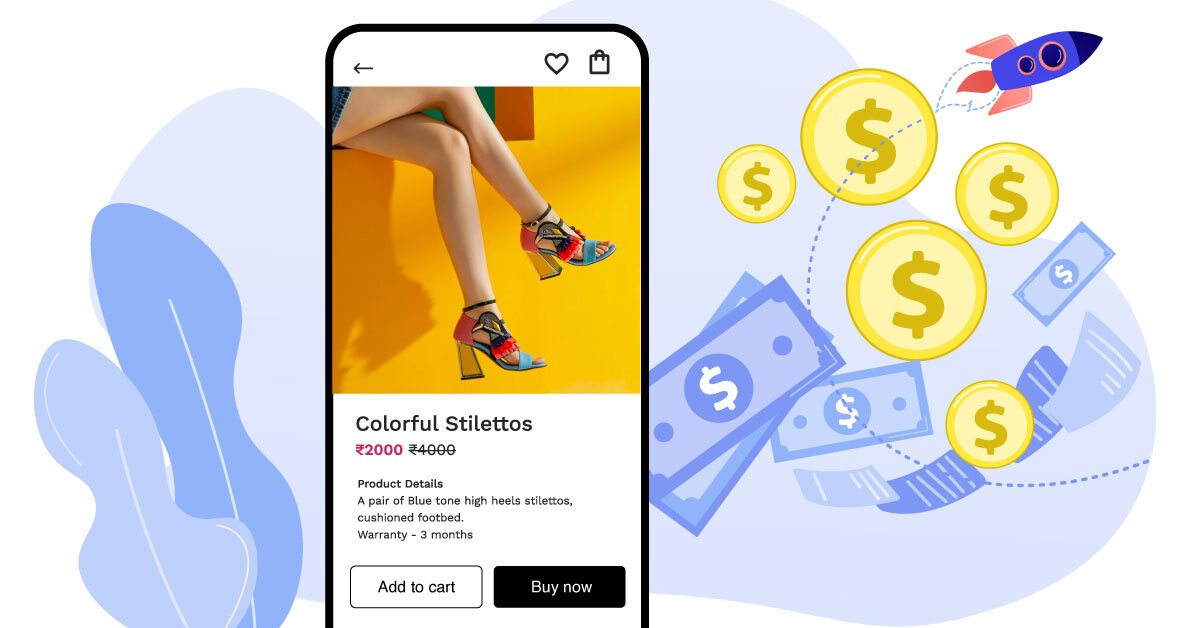
In today’s digital-dominated world, the importance of mobile commerce is growing by leaps and bounds. Consumers now increasingly turn to their smartphones for purchases – making it essential that businesses optimize their mobile experience to drive conversions and increase shopify sales. Of prime significance here is the product page, which often serves as a customer’s first point of contact with your products & services on the Shopify store or other mediums/platforms you work with. These pages must be tailored vigilantly with user journey optimization so customers can move through swiftly without any hassles leading into buying decisions, thus increasing ROI significantly!
Data from Shopify showed an astonishing 50+% online shopping via mobiles alone last year. Moreover, this figure will only continue its upward trajectory, necessitating companies to keep abreast about how best they can leverage modern technology & tools like personalization, etc., to stay ahead in the game!
So, what is Conversion?
Conversion refers to a consumer adding a product to their cart on a product page. This action is an important indicator of consumer interest and can lead to an eventual purchase. Conversion rates, or the percentage of visitors who add a product to their cart, can vary greatly depending on the product page’s design and functionality.
In this article, we will discuss in detail these tactics and provide examples of D2C brands that have successfully implemented them to increase conversions on their product pages. These tactics can be used to improve conversion rates for both mobile web and native app.
Importance of increasing conversion rates on product pages for Shopify sales
Increasing conversion rates on product pages can significantly impact overall Shopify sales. In fact, a 1% increase in conversion rates can lead to a significant increase in revenue. By optimizing product pages to better appeal to consumers, businesses can increase the likelihood of a consumer completing a purchase.
Optimizing Product Images
In some categories bigger images can help consumers better visualize the product, leading to a greater likelihood of a purchase. An example of a D2C brand that uses big images is Brooklinen. They use big-sized images to showcase their products and make it easy for the customers to see the details. Additionally, high-quality images can help establish trust in the product and the brand.
Avoiding auto-play videos
Auto-play videos can be disruptive to the consumer experience and can lead to a higher bounce rate on the page. Instead, businesses should opt for high-quality images that accurately depict the product. An example of a D2C brand that avoids auto-play videos is Allbirds; they show the images of the shoes from different angles and close-ups instead.
Transparency in Pricing
Clear and upfront pricing is important for establishing trust with the consumer, and this can lead to increased conversions as consumers are more likely to complete a purchase when they trust the brand. A study by the Nielsen Norman Group found that clearly-labeled pricing can lead to a 12.4% increase in conversions. Including shipping costs and other fees upfront can help establish trust with the consumer and avoid any surprises at checkout. An example of a D2C brand that includes shipping costs and other fees upfront is Mejuri; they show the final price, including shipping and taxes.
Simple Product Synopsis
Simple and easy-to-consume product information can help consumers quickly understand the product and its benefits, leading to a greater likelihood of a purchase. An example of a D2C brand that provides easy-to-consume product information is Allbirds; they have a clear and simple product description.
Pinned Buy Now Buttons
Pinned “Buy Now” buttons, also known as “sticky buttons,” can make the purchasing process easy for consumers by keeping the “Add to Cart” button in view as they scroll through endlessly long product pages. An example of a D2C brand that uses Pinned Buy Now Buttons is Wayfair; they keep the “Add to cart” button pinned at the bottom of the screen as customers scroll through their product pages, making it easy for customers to add items to the cart.
Mentioning limited stock to encourage immediate purchase
Mentioning limited stock can also establish a sense of exclusivity along with create some urgency that can increase demand for the product in turn leading to increased conversions. This can be achieved by including a stock count or highlighting that a product sells fast (top seller ) on the product page. An example of a D2C brand that mentions limited stock to encourage immediate purchase is Sephora; they show the stock availability of each product on the product page.
Conclusion
An improved mobile presence is key to improving Shopify sales, and product page optimization is essential. To maximize conversion rates, businesses should focus on crafting an effortless experience that leads consumers directly towards converting – optimizing their images, providing transparent pricing info, displaying easy-to-understand product information in a clear manner with strategic scarcity messaging, and creating prominent “Add to Cart” buttons. All these tactics must be tailored according to the business’ niche and audience so they can reach maximum impact!
At Apptile, our goal is to empower you to create personalized experiences that showcase your brand in the best possible light irrespective of your business size or budget.
Get started now and create stunning mobile apps in seconds without any coding. Book a demo with our team to see how Apptile can help you transform your business for the mobile era. We would love to hear more about your brand’s mobile app vision and help you bring it to life. Also, follow us to stay ahead of the eCommerce game and join the conversation today!